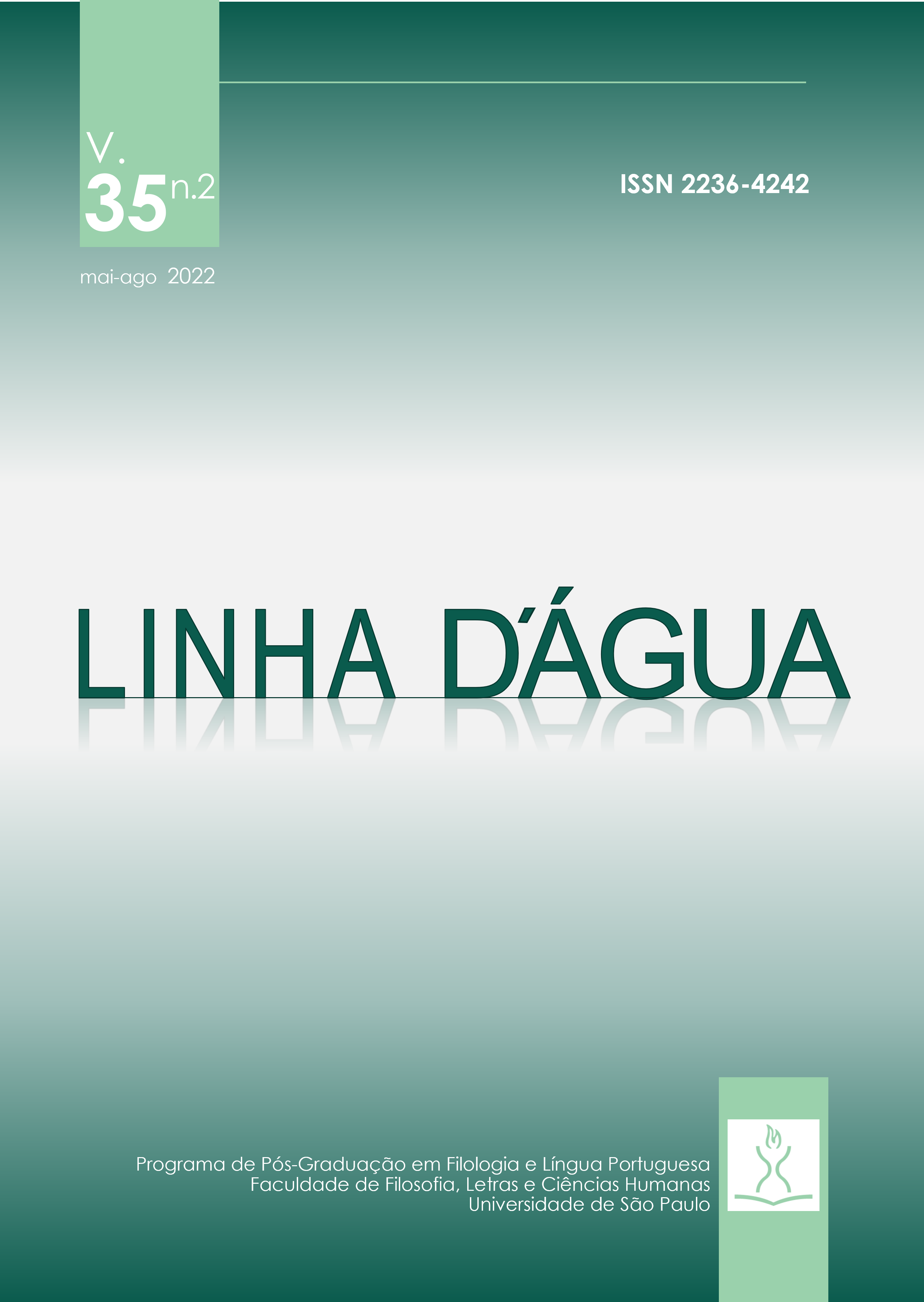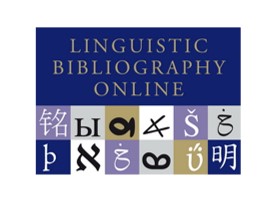Saisir la figure du lecteur à travers l’analyse du discours contrastive
DOI:
https://doi.org/10.11606/issn.2236-4242.v35i2p33-53Palabras clave:
Analyse du discours , Manuels de langues étrangères , Déictiques , Fonctionnalisations , JaponResumen
L’analyse du discours contrastive (ADC) constitue un cadre théorique permettant de comparer des genres discursifs au sein de communautés discursives différentes. Dans cet article, nous adoptons ce cadre théorique afin d’examiner un ensemble d’ouvrages d’anglais et français langues étrangères (EFL et FLE) utilisés par des lycéens japonais entre 2017 et 2018. Les premiers (EFL) étant rédigés principalement par des auteurs d’origine japonaise, alors que les seconds (FLE) sont conçus par des équipes beaucoup plus mixtes, une approche comme celle de l’ADC permet de relever des choix qui peuvent dépendre des pratiques discursives des auteurs, ayant ici des origines différentes. Plus précisément, nous proposons une étude ciblée de la manière dont les auteurs des manuels s’adressent à leurs lecteurs/apprenants, explorant notamment l’utilisation de déictiques sur le plan énonciatif (KERBRAT-ORECCHIONI, [1999]2014) et de syntagmes nominaux relevant de fonctionnalisations au niveau sociolinguistique (VAN LEEUWEN, 2008). Les résultats de l’analyse contrastive permettent de constater deux pratiques différentes: d’une part, une inclusion qui s’effectue entre les auteurs (majoritairement japonais) des manuels d’anglais et leurs lecteurs, de l’autre une sorte d’exclusion opérée à travers le rappel fréquent du cadre scolaire qui est mis en place par les auteurs (français et japonais) des manuels de français.
Descargas
Referencias
ALTHUSSER, L. Positions (1964-1975). Paris: Les Éditions sociales, 1976.
BEACCO, J.-C. Les genres textuels dans l’analyse du discours: écriture légitime et communautés translangagières. Langages. 1992, 105, p. 8-27. DOI: 10.3406/lgge.1992.1621.
BENVENISTE, É. L’appareil formel de l’énonciation. Problèmes de linguistique générale, tome II. Paris: Gallimard, 2005/1980, p. 79-88.
DWORKIN, S. The viking in the wheat field. New York: Walker & Company, 2009.
HARDY, T. Identity, place and language. Conflict and Negotiation in the Writing of an English Textbook for Japanese Secondary School Students, in S. Horiguchi, Y. Imoto et G. S. Poole (Ed.), Foreign Language Education in Japan. Rotterdam: Sense Publishers, 2015, p.35-49.
HÉRAIL, F. L’époque ancienne, in F. Hérail (dir.), L’Histoire du Japon des origines à nos jours. Paris: Hermann Éditeurs, 2009, 87- 211.
KERBRAT-ORECCHIONI, C. L’énonciation. Paris: Armand Colin, [1999]2014.
LABRUNE, L. (dir.), BAZANTAY, J. et NAKAMURA-DELLOYE, Y. Précis de linguistique japonaise. Paris: Ophrys Éditions, 2019.
LIDDICOAT, A. J. The ideology of interculturality in Japanese language-in-education policy. Australian review of applied linguistics. 2007, 30 (2), p.20.1-20.16. DOI: 10.2104/aral0720.
MAINGUENEAU, D. Genèses du discours. Liège: Éditions Pierre Mardaga, 1984.
MAINGUENEAU, D. Discours et analyse du discours. Paris: Armand Colin, 2014.
MAINGUENEAU, D. Analyser les textes de communication. Paris: Armand Colin, 2016.
VON MÜNCHOW, P. Contribution à la construction d’une linguistique du discours comparative: entrées dans le genre journal télévisé français et allemand. Université Paris 3 (thèse de doctorat), 2001.
VON MÜNCHOW, P. Les journaux télévisés en France et en Allemagne. Plaisir de voir ou devoir de s’informer. Paris: Presses Sorbonne Nouvelle, [2004] 2009.
VON MÜNCHOW, P. L’analyse du discours contrastive. Théorie, méthodologie, pratique. Limoges: Éditions Lambert-Lucas, 2021.
OKINA, K., SHIRAKAWA, M., et SHIRATSUKA, S. The Asset Price Bubble and Monetary Policy: Japan’s Experience in the Late 1980s and the Lessons. Monetary and Economic Studies (Special Edition), 19 (2), 2001, p.395-450. URL: http://www.imes.boj.or.jp/research/papers/english/me19-1-4.pdf (consulté en juin 2022).
RONCI, M. Mixed-approach analysis of foreign language textbooks of English and French in Japan In Ekaterina Ignatova, Humaira Jehangir, Shengnan Liu, Xiujie Huai, Yejin Jung (Ed.), Papers from the Lancaster University Postgraduate Conference in Linguistics & Language Teaching, University of Lancaster, 2020, p.30-62. URL: http://wp.lancs.ac.uk/laelpgconference/files/2021/02/Vol12-03_martina_ronci_article.pdf (consulté en juin 2022).
SHOLOMON-KORNBLIT, I. La diversité culturelle comme « patrimoine commun de l’humanité » ou le pouvoir unificateur d’une métaphore. Du singulier au collectif: construction(s) discursive(s) de l’identité collective dans les débats publics. Limoges: Éditions Lambert-Lucas, 2020, p.149-162.
VAN LEEUWEN, T. The representation of social actors. In Carmen Rosa Caldas Coulthard, Malcolm Coulthard (Ed), Texts and practices. Readings in critical discourse analysis. Eastbourne: Routledge, 1996, p.32-70.
VAN LEEUWEN, T. Discourse and practice. New tools for critical discourse analysis. Oxford: Oxford University Press, 2008.
[A&K] AKASHI, N., BERNARD-MIRTIL, L. et NICOLAS, L. Amélie et Kenzo. Plus Rapide. Tōkyō: Éditions Asahi, 2013.
[ALD] NAKAI, T., KAWAKATSU, N., NAKAMURA, K. et YOKOTANI, S. A la découverte. Tōkyō: Daisan Shobō, 2004/2016.
[DFR] KOMATSU, S. et DELMAIRE, G. Destination Francophonie. Tōkyō: Surugadai, 2009/2015.
[ES1] TAKAHASHI, M., JÉGONDAY, N., HAYASHI, H. et YAHYAOUI, C. En Scène I. Troisième édition. 場面で学ぶフランス語 2[改訂版](Le français appris en contexte 1 [3e édition]). Tōkyō: Sanshūsha, 2018.
[ES2] TAKAHASHI, M., HAYASHI, H. et YAHYAOUI, C. En Scène II. Nouvelle édition. 場面で学ぶフランス語 2[改訂版](Le français appris en contexte 2 [édition révisée]). Tōkyō: Sanshūsha, 2017.
[MJE] VANNIEUWENHUYSE, B., AZRA, J.-L., SERVERIN, S., MASSOULIER, N., VUILLOT, A. et MIKI, Y. Moi, je...コミュニケーション (Communication). Manuel de communication. Taiwan: Alma Éditeur, 2012/2017.
[NAV] ARITOMI, C., KIKUKAWA, I., KURODA, E., TAMOGAMI, S. et HATTORI, E. なびふらんせ — パリをめくる — (Navi français – faire le tour de Paris). Tōkyō: Éditions Asahi, 2016/2017.
[VTP] FUJITA, Y., FUJITA, T. et GILLET, S. Mon premier vol Tokyo-Paris. Nouvelle édition. Tōkyō: Surugadai, 2016.
[CR1] SHIMOZAKI, M. 霜崎實 (dir.). CROWN. English Communication I. New Edition. Tōkyō: Sanseidō, 2018.
[MW1] MORIZUMI, M. 森住衛 (dir.). MY WAY. English Communication I. New Edition. Tōkyō: Sanseidō, 2016/2018.
[NOW] ITŌ, N. 伊東治己 et KAN, M. 菅正隆 (dir.). NEW ONE WORLD. Communication II. Revised Edition. Tōkyō: Kyōiku, 2017/2018.
[PAS] KURAMOCHI, S. 倉持三郎, KAWABATA, K. 川端一男, TADOKORO, M. 田所メアリー, ISODA, Y. 磯田 祐史, SATO, M. 佐藤光重, SUNAGA, Y. 須永豊, GYŌDA, I. 行田勇, TAKONAI, K. 田子内健介. My Passport. English Conversation. Tōkyō: Bun-Eidō, 2018.
[UNI] ICHIKAWA, Y. 市川康男, TAKAHASHI, K. 高橋和久, ISHII, Y. 石井康毅, TANAHASHI, M. 棚橋昌代 et MOMOO, M. 桃尾美佳. Unicorn. English Communication 3. Tōkyō: Bun-Eidō, 2017.
[VQ1] NOMURA, K. 野村恵造, YAMAZAKI, N. 山崎のぞみ, UCHIDA, S. 内田諭, SHIMAHARA, K. 島原一之, TAKAHASHI, M. 高橋昌由, CARAKER, R., Smith, R. et RALPH, B. Vision Quest. Standard Revised. English Expression I. Ōsaka: Keirinkan, 2017.
Descargas
Publicado
Número
Sección
Licencia
Derechos de autor 2022 Martina Ronci

Esta obra está bajo una licencia internacional Creative Commons Atribución-NoComercial 4.0.
A aprovação dos manuscritos implica cessão imediata e sem ônus dos direitos de publicação para a Linha D'Água. Os direitos autorais dos artigos publicados pertencem à instituição a qual a revista encontra-se vinculada. Em relação à disponibilidade dos conteúdos, a Linha D'Água adota a Licença Creative Commons, CC BY-NC Atribuição não comercial. Com essa licença é permitido acessar, baixar (download), copiar, imprimir, compartilhar, reutilizar e distribuir os artigos, desde que para uso não comercial e com a citação da fonte, conferindo os devidos créditos autorais à revista.
Nesses casos, em conformidade com a política de acesso livre e universal aos conteúdos, nenhuma permissão é necessária por parte dos autores ou do Editor. Em quaisquer outras situações a reprodução total ou parcial dos artigos da Linha D'Água em outras publicações, por quaisquer meios, para quaisquer outros fins que sejam natureza comercial, está condicionada à autorização por escrito do Editor.
Reproduções parciais de artigos (resumo, abstract, resumen, partes do texto que excedam 500 palavras, tabelas, figuras e outras ilustrações) requerem permissão por escrito dos detentores dos direitos autorais.
Reprodução parcial de outras publicações
Citações com mais de 500 palavras, reprodução de uma ou mais figuras, tabelas ou outras ilustrações devem ter permissão escrita do detentor dos direitos autorais do trabalho original para a reprodução especificada na revista Linha D'Água. A permissão deve ser endereçada ao autor do manuscrito submetido. Os direitos obtidos secundariamente não serão repassados em nenhuma circunstância.











